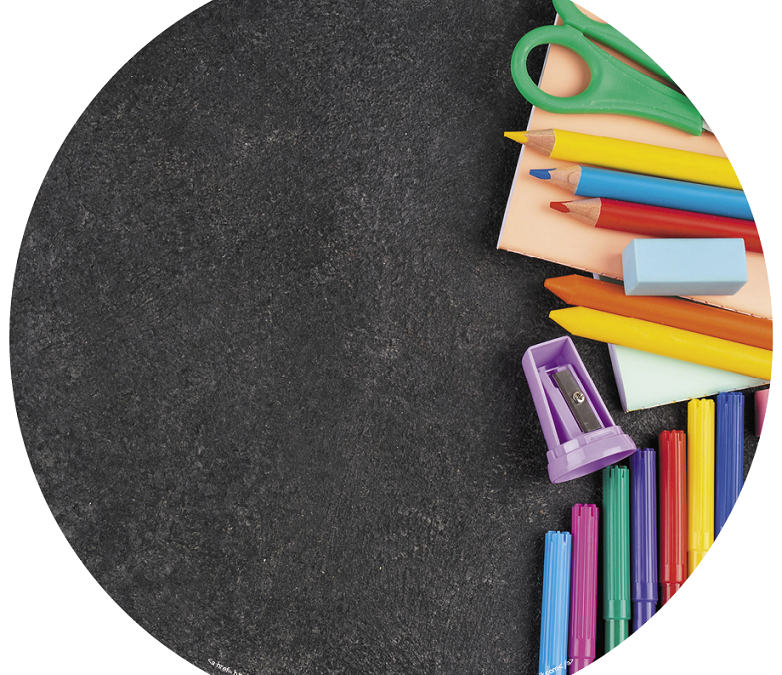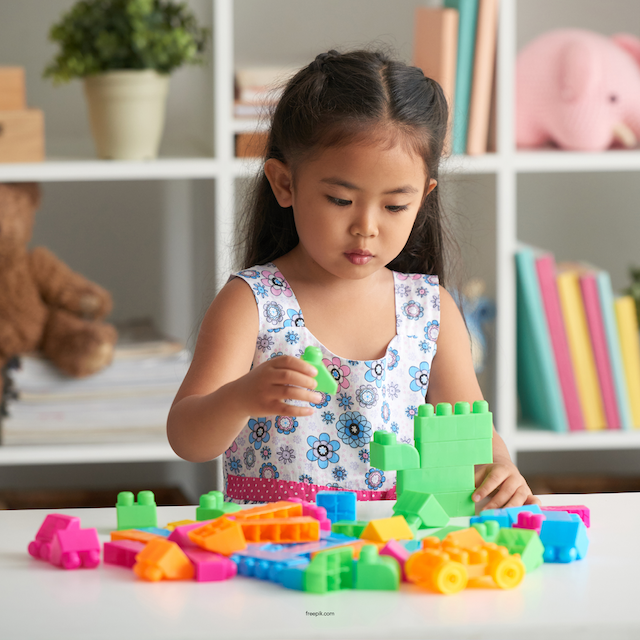
by IABA Team | Sep 27, 2021
The likelihood that a person with autism has another condition correlates strongly with the age at which they received their autism diagnosis, according to a new study. The study also noted that girls with autism are more likely than neurotypical girls to have other conditions, to a degree not seen in boys.
Study factors included whether a person with autism’s age at ASD diagnosis or birth sex changed their chance of having any of 11 common comorbid conditions (including epilepsy, anxiety, and ADHD). The study drew on data from around 16,000 people with autism and more than 650,000 neurotypical people up to 16 years old.
Among people included in the study who received late ASD diagnoses (11 to 15 years old) 26% of girls and 13% of boys were also diagnosed with a comorbid condition. The trend for intellectual disability in the study was the opposite with 40% of people with an early autism diagnosis having an intellectual disability, compared to just 10% percent of people with a late autism diagnosis.
Looking at Gender and ASD Comorbidities
For 11 co-occurring conditions considered by study researchers, the age of autism diagnosis was the single biggest predictor of whether a participant had that condition. Gender was another major factor.
Among individuals with autism, girls were 2.2X more likely to have anxiety than boys. By contrast, anxiety is about 1.4X higher in neurotypical girls than neurotypical boys. And while neurotypical boys are 2.6X more likely to have ADHD than neurotypical girls, the ratio dropped within the ASD population. Boys with Autism are just 1.6X more likely than girls with autism to have ADHD.
Looking at the ASD Spectrum Index
86 percent. That is the proportion of people with autism who show “a fair to very good level of objective psychosocial functioning,” according to a study that tracked the jobs. The happiness and close friendships of 917 adults — 425 men and 492 women — were tracked over a six-year period. These study results appeared in the journal Autism in June 2021.
The results of recent studies have started taking closer looks at both the age of ASD diagnoses and the gender of people with ASD. The early data shows promising results in the differences between boys and girls with ASD.
ABA Therapy from IABA Consultants
If you have questions regarding autism treatment, education, or plans using ABA therapy, we are here for you! Our goal is to make sure no family is turned away due to financial constraints. Our therapy team would love to talk to you. Find the location closest to you and give us a call. We’re here for you.
Sources
Spectrumnews.org, Community Letter
Journal of Autism & Developmental Disorders, July 2021
Acta Psychiatrica Scandinavica, July 2021
Health Services Research, July 2021

by IABA Team | Sep 6, 2021
We recently wrote a blog on what to do to start a smooth back-to-school transition for kids with ASD. The blog was fairly dense, so this one is going to take a more compact look in a checklist form for back-to-school needs.
ASD School Supply Checklist
Each school, daycare, or therapy clinic will have different requirements for school supplies. Before looking at our general list, you’ll definitely want to look over any list of supplies or materials provided by your child’s school.
The following are general items with brief guidelines to help you remember what your child may need at school.
- Lunch box. Having a reusable lunch box with compartments may help your child get into a regular lunch routine. Buying several of the same lunch boxes can help if you don’t have time to wash one every day. Compartments in lunchboxes can help your child understand where their regular lunch foods will be every day.
- Comfortable Clothing. Make sure your child is comfortable with all of the clothing they will be wearing to school. This is especially important for children with sensory issues as new clothing may not be comfortable. Be sure to have your child wear any new clothes at home before sending them to school in a new outfit. Buying the same outfits may also help some children get into a routine for school every day.
- Comfort Items. Make sure your child has their favorite comfort item to bring to school each day. Things like stuffed animals or a favorite blanket may help your child settle into a comfortable routine at school each day.
- Consistent School Supplies. After looking at a supply list provided by your child’s school, go shopping with your child and allow them to pick versions of the supplies they are comfortable with. Remember to buy extras of expendable supplies so they will have the same item they are comfortable with after the first one is done.
- Organized Backpack. A backpack with extra pouches or internal dividers is a great way to set up your child’s bag for easy use that can help them get into a regular school routine. Putting things in the same place can help them remember where their things are throughout the school day.
- Sensory Items. If your child has specific sensory issues, be sure to have a specific sensory comfort item packed in their backpack. Textured items like smooth stones or blankets made from specific materials can help if your child needs comfort during the school day.
- Books. Packing specific books can also help your child deal with difficult times during school. Books are a combination of comfort items and sensory items, as a teacher or aide can read the book to them if needed.
- Emergency Sheet. Be sure to include any information a teacher, aide, or therapist may need in your child’s bag. This sheet should include any and all information regarding sensory issues, specific behavioral issues, preferences, and anything else they may need to know if your child is having a difficult time.
- A Phone for Emergencies. This is not a phone for your child, but a phone for the teacher to use if your child really needs a parent. Definitely talk to your child’s school about policies and procedures for phones–don’t just pack one in their backpack. A basic flip phone is all that is required for emergencies where a parent is needed right away.
Remember, not all of these things will be required for your child. This list is for supplies you may have forgotten as the school year got here. Think of it as a list to jog your memory or help you modify school supplies to fit the needs of your child.
ABA Therapy from IABA Consultants
If you have questions regarding autism treatment, education, or plans using ABA therapy, we are here for you! Our goal is to make sure no family is turned away due to financial constraints. Our therapy team would love to talk to you. Find the location closest to you and give us a call. We’re here for you.
References
50 Back-to-School Tips from Autism Moms, Angelsense
Back To School Tips For Families With Autistic Children, Art of Autism

by IABA Team | Jul 27, 2021
Those with autism spectrum disorder (ASD) have a more difficult time communicating compared to those who present as neurotypical. Communication isn’t just words and speaking. It’s reading body language, facial expressions, and gestures. All of this makes a conversation happen and conversations would be dull and hard to understand without them.
Autistic people have a hard time reading these cues leading to social misunderstandings. A new study just published in the Journal of Autism and Developmental Disorders found that autistic people seem to have an inability to recognize anger in faces. This was interesting because it seemed that anger was a specific emotion that was frequently misunderstood. There wasn’t any problem recognizing more positive emotions.
Autism is Not an Impairment
Ph.D. researcher Connor Keating wrote in a news press suggesting that the description of autism as an impairment would be incorrect. The corresponding news release for this study reads, “It’s more that autistic and non-autistic faces may be speaking a different language when it comes to conveying emotion.”
Keating explains another theory called the “double empathy problem” as a reason why these communication boundaries exist. As explained by the National Autistic Society, this is when two people with very different backgrounds communicate with each other and will lack empathy for each other. We base our social interactions on our past experiences and these experiences are so different for autistic people and neurotypical people.
This will break down the interaction and frustrate both the autistic person and the neurotypical person. It makes perfect sense that socializing between the two will have some challenges.
The Challenges of ASD Communication
Autistic people can often come across as rude and have a misunderstanding of basic social cues compared to neurotypicals. Having empathy for one another would ease conservation for both parties. This study suggests that autistic people and neurotypical people are simply missing each other’s signals. With facial expressions, autistic people see them differently but that doesn’t mean it’s wrong.
School social worker Jen Elcheson has autism and has firsthand experience with not recognizing anger. She explained this by writing in an MSN article that any subtle signs of anger on a face she couldn’t recognize. Unless the anger was outwardly expressed, Elcheson wouldn’t pick up on it and continue to anger whoever she was with.
It took many years for her to understand the problem and work around it. Elcheson also shared that she doesn’t have these problems with other autistic individuals. She says it’s like they seem to understand each other. Elcheson agrees with Dr. Keating’s findings and finds validation in them.
ABA Therapy from IABA Consultants
If you have questions regarding autism treatment with ABA therapy, we are here for you! Our goal is to make sure no family is turned away due to financial constraints. Our therapy team would love to talk to you. Find the location closest to you and give us a call. We’re here for you.
Sources: National Autistic Society, Moms.com

by IABA Team | Jul 20, 2021
Because “high-functioning autism” isn’t an official diagnosis, the term can be hard to fully define. According to the team at VeryWell Health, however, the term can mean any of the following:
- A person with mild autism symptoms who still meets the criteria for diagnosis
- A person on the autism spectrum whose IQ score is above 70
- A person with autism who can successfully navigate typical school or work environments
- A person who passes as neurotypical by masking their symptoms
- A person who previously qualified for an Asperger syndrome diagnosis
As professionals continue to recognize these milder or “high-functioning” people on the autism spectrum, more children receive an autism diagnosis. However, it can be hard to know if your child meets the criteria if you don’t know what to look for.
A poll conducted with several ABA therapists says these 10 signs are most commonly associated with autism, especially a case that is considered high functioning:
- Emotional Sensitivity
- Fixation on Particular Subjects or Ideas
- Linguistic Oddities
- Social Difficulties
- Problems Processing Physical Sensations
- Devotion to Routines
- Development of Repetitive or Restrictive Habits
- Dislike of Change
- Focus on Self
- Unusual Movement Patterns
Because autism spectrum disorder is such a broad diagnosis, it’s important to remember that not all of the signs need to be present for diagnosis, and many of these signs can look very different from person to person. This is why the diagnosis process is so important.
What to Do if You Think Your Child has High-Functioning Autism
If you suspect your child falls on the autism spectrum, you may feel scared, overwhelmed, or unsure of what to do next. This is all very normal for any parent whose child is receiving a disability diagnosis, so don’t worry.
It’s important to recognize any feelings you may be experiencing and also learn to compartmentalize them as you work towards receiving a diagnosis for your child.
According to the American Academy of Pediatrics, you’ll first need to share your concerns about your child’s behaviors with their pediatrician. From there, your pediatrician will put in the orders for a full assessment to be completed. These assessments are usually done by an entire team of professionals in multiple parts. The testing will include both observations of your child and questions for you to complete.
What to do if Your Child Qualifies for an ASD Diagnosis
If your child qualifies for an autism spectrum disorder diagnosis, the next steps may include scheduled appointments with therapists and other specialists and the development of a treatment plan.
In many cases, this team includes a speech therapist, occupational therapist, and a psychologist or psychiatrist. You can also opt to try applied behavior analysis (ABA) therapy, but many people in the autism community have mixed feelings about this therapy.
If your child is under the age of three, they may qualify for early intervention programs from your state or local government. If your child is over the age of three, they will likely qualify for special education services from your local school district and may even have the option to enroll in an early start or pre-kindergarten program specifically designed for children with IEPs.
Even children with high-functioning autism require some interventions and special needs. There’s nothing wrong with a child on the autism spectrum, and you can absolutely give your child the tools they need to succeed.
It’s important to recognize early signs of autism, even if your child appears to communicate and meet developmental milestones since early intervention can really help.
ABA Therapy from IABA Consultants
If you have questions regarding autism treatment with ABA therapy, we are here for you! Our goal is to make sure no family is turned away due to financial constraints. Our therapy team would love to talk to you. Find the location closest to you and give us a call. We’re here for you.
Sources: Moms.com

by Jessie Cooper | Jul 15, 2021
What do you do with anger that’s real? Anger that will burn cities and clear anything and everything in its path? Where did it come from and why is it here?
The very short answer is anger feels good in the moment–it’s the aftershocks that are damaging if they are unleashed without guidance. Anger is a release of pent-up emotions that have no direction to go. The ensuing explosion unleashes this anger and gives us a false pretense of power. Luckily, most of us feel horrible when we get this spot but there are people who abuse others during periods of anger.
Anger & Abuse
For those of you who abuse other people with your anger, know this: there is fear, hurt, shame, guilt, sadness, grief, and other emotions that lie just beneath your anger. While your explosions and “wins” over others may feel like triumphs they are in fact a loss.
When you give in to your anger you abandon yourself and your other emotions. You are also hurting others to make yourself feel better. This is never OK. Not ever. You can heal at any time by choosing to stop hurting others and tend to your wounds.
Onto the rest of us.
Coping with Anger
If you wield your anger like a weapon then feel guilt, shame, or other emotions after an outburst, you are experiencing what most of us experience. We all experience this at some point–no human is perfect (I promise).
Anger is a messenger that you have a lot going on and are either not taking the best care of yourself or are faced with a very challenging situation in life. Anger lets us know that we need love and care. Anger tells us to look at our brave hearts, kind souls, and human feelings and provide care.
Finding the Cause of Anger
Last week I wrote to you about rage. Rage, like anger, is a powerful emotion. When rage is the messenger and not the driver it can be destructive beyond measure. Without direction anger and rage are destructive to you, me, and everyone in our path.
After my first son, Henry, was born I suffered from postpartum depression which was exacerbated by domestic abuse. I don’t have words for the darkness I walked through during that time. I also don’t have words for the shining light of love I found in my son.
I fought my way through postpartum depression with therapy, medication, and a loving community. At the time, I still was not able to identify I was living in domestic abuse. When my son Declan was born less than two years later I was determined to avoid suffering from postpartum depression again.
Looking back at my pregnancy and the birth of my second son is bittersweet because the work and self-care I put in were incredible. None of it involved his father, other than my request to “not attack me while I have the baby.” It didn’t work. What worked was asking my friends and family to wrap me in support, encapsulating my placenta, and taking real maternity leave. I thought I had it down!
This is the point when I started to feel anger, shortly followed by rage.
Avoiding Manifestations of Anger
I remember being stumped when I thought about why I was so angry after my six-week check-up. I am not a quick-to-anger person unless I witness serious injustice. I asked my wonderful OBGYN, who supported me through both births, why I felt anger? She laughed, “you have two children under 2, this is normal!”
While I did not like this answer she was totally right. Henry and I had gotten into our groove over the past 20 months. I knew how to take care of the two of us, but caring for two babies changed our routine. I was also always walking on pins and needles during my previous marriage. My nerves were thin and my children were loud. I was sleep-deprived, nursing, and doing almost all of it on my own. Something felt like it had to give.
Anger told me I needed to find a way to take care of myself so I could cool down as a mama. I felt extreme guilt (as we all do) when I would lose it with my boys. I read this awesome book, How to Stop Losing Your Shit With Your Kids, and started a mom-tribe book club where we all applied the practices of the book while supporting each other as mamas.
I would be remiss to not mention the asshole things kids do sometimes. God I love them and, yes, they are all limbic systems, but this is so maddening when they have no survival instincts.
Not Losing Yourself to Anger
I want to let everyone know that anger is completely normal if you are going through early motherhood while living with domestic abuse. If you let the anger take over, however, you will spend most of early motherhood lost in its grasp. If I had totally given into anger I would have missed so many moments with my sons simply because I was depleted.
Now, two years later, while I still have my moments (don’t we all? Mamas?) I also know when I feel anger around the boys, what I really need is a quiet minute and to be present with them. I don’t always parent perfectly (OK, almost never) but ‘reset time’ only takes a few minutes and prevents anger from dominating my parenting, period. All because I listened to what the topography of my anger map was telling me.
Anger still comes for me, as does rage. When I see injustice against others, my children, or myself I can’t begin to explain the flames that rise within my heart. I do know that I unequivocally do not want to hurt another being. The quick release of lashing out in anger can cause long-lasting damage.
Channel Your Rage to be Productive
Anger can feel powerful. All-encompassing anger feels like it can get you anything you desire. I can promise you that this is a lie. What anger is really telling you is to pay attention to your own heart and world so that you can right a wrong. That wrong can either be how you’re caring for yourself (postpartum depression care or lack thereof) or how others are treating you (leaving domestic abuse).
If we choose to listen to anger and rage, rather than act on them immediately, we can learn they can be some of the wisest guides in our lives. Anger and rage tell us what needs to be corrected. Love tells us how to correct it.
You and I can use this wise messenger to become a warrior of love, create the lives we want to live, and build the better world we all envision. Don’t burn it down. Build it up.
Xoxo,
Jessie






